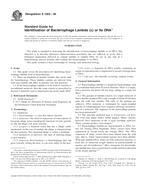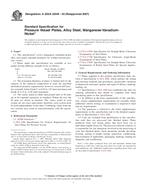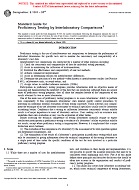1.1 This test method covers the determination of the amount of carbon residue (Note 1) left after evaporation and pyrolysis of an oil, and is intended to provide some indication of relative coke-forming propensities. This test method is generally applicable to relatively nonvolatile petroleum products which partially decompose on distillation at atmospheric pressure. Petroleum products containing ash-forming constituents as determined by Test Method D482 or IP Method 4 will have an erroneously high carbon residue, depending upon the amount of ash formed (Note 2 and Note 4).
Note 1: The term carbon residue is used throughout this test method to designate the carbonaceous residue formed after evaporation and pyrolysis of a petroleum product under the conditions specified in this test method. The residue is not composed entirely of carbon, but is a coke which can be further changed by pyrolysis. The term carbon residue is continued in this test method only in deference to its wide common usage.
Product Details
- Published:
- 10/01/2014
- Number of Pages:
- 7
- File Size:
- 1 file , 250 KB


